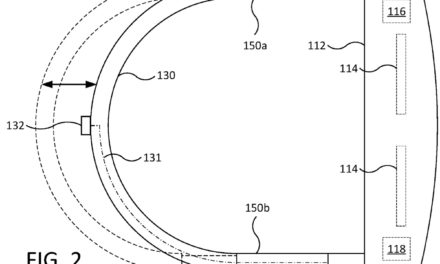By Greg Mills
As with most any piece of new electronic hardware, the iFixit site sends someone to stand in line to scoop up one unit for immediate teardown. They meticulously pry the darn thing open and prepare a parts list of the innards.
They estimate the cost to assemble the device and what the parts list amounts to. Then they post pictures and cost to manufacture the new item for all the world to see (http://www.ifixit.com/Teardown/BlackBerry-PlayBook-Teardown/5265/1).
As it turns out PlayBook is pretty well constructed and has four speakers, two cameras and pretty good memory and processors. Today at 3 pm (Eastern) iFixit will release their estimated cost to manufacture the PlayBook. They are working to identify all the chips and parts used to estimate a likely cost to RIM for each PlayBook sold. Even in the teardown, the lackluster software for the platform and lack of broadband radio chips in PlayBook was noted.
What one has to remember is that slate computers are more than the sum of their parts. An Apple iPad would be nothing without the software and apps that makes it “magic.” No one denies the fact that any of the top high tech computer companies can, at some cost, build a touch screen tablet computer.
The devil is in the details of the complete platform. Apple certainly makes money on iPads, but also sees money long term in its share of apps, music and digital content they stream to the device.
The iFixit teardown report indicates that PlayBook is a bit easier to tear down than an iPad. Apple used hot glue to put iPad 2 together, which complicates repairs for the device. The touch screen for PlayBook is packed with pixels and likely cost RIM a bundle. What the market will be looking for is the big issue: can RIM make money manufacturing and selling the PlayBook at iPad prices?
Apple sets the bar for competitors by putting a very aggressive price point on the iPad. The parts and assembly of the tablet are due to the vast production numbers demanded and Apple’s ability to get super low prices from suppliers and assemblers alike. Apple is so vertical they can make money on their devices where competitors are struggling to show a profit on similar products.
The estimated cost to RIM for building PlayBooks will tell a lot about the potential for success of the product and even the company, long term. Sometimes manufactures sell electronic devices at a loss to gain market share. Microsoft, for example, sold XBoxes at a lost for years to gain market share and create a platform which would allow them to sell games. The profit on games was expected to recoup the loss leader sort of marketing. Sony also lost money on the PlayStation for a while, as the cost of the device was so high gamers were unlikely to buy one.
The problem RIM has is that selling PlayBooks at break-even won’t make them money in the long run without some sort of money making element to their platform. RIM’s software isn’t likely to become a money maker without selling a whole lot of PlayBooks and charging quite a bit for apps.
The long and short of it is that following Apple’s lead is no easy matter. The overall situation is so problematic that most of the prototype tablet computers shown off at the hardware show a few months back will never be actually built and launched.
RIM’s PlayBook launched to a cool reception where no long lines or sold-out situation occurred anywhere. Samsung’s Galaxy Tab has sold, but not like the iPad. The Motorola Xoom hasn’t done well either. Later today the numbers will come out on Apple’s latest financial quarter, and announced iPad sales will certainly spectacular. The iPad 2 is still in short supply.
Apple’s iOS platform is so far ahead of the competition there is no one in second place. Developers for slate computers are looking for additional platforms to support and finding nothing meaningful out there yet. Never ashamed to be late to the party, rumblings are coming out of Redmond that they may yet fire up the copy machines and reverse engineer Apple’s iOS.
That’s Greg’s Bite for today.
(Greg Mills is currently a graphic and Faux Wall Artist in Kansas City. Formerly a new product R&D man for the paint sundry market, he holds 11 US patents. Greg is an Extra Class Ham Radio Operator, AB6SF, iOS developer and web site designer. He’s also working on a solar energy startup using a patent pending process for turning waste dual pane glass window units into thermal solar panels used to heat water see: www.CottageIndustySolar.com Married, with one daughter, Greg writes for intellectual property web sites and on Mac/Tech related issues. See Greg’s art web site at http://www.gregmills.info He can be emailed at gregmills@mac.com )



